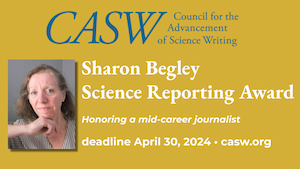One small variation in a person's genetic code can be the difference between a drug helping treat a disease—or causing a severe and possibly fatal reaction.
That's one reason why it is vital for scientists to learn how people's genetics translates into differences in physical traits or behaviors, such as how they respond to certain drugs, according to researchers presenting 20 February at the 2010 AAAS meeting in San Diego.
Scientists discussed how sequencing an organism's genome—all of its hereditary information—can lead to an understanding of how it functions.
Like a car manual, genome sequencing has given geneticists a list of working parts, said Stephen Oliver, a systems biologist at the University of Cambridge. "But you need to know how those parts connect" in order to explain functional differences among organisms. That process is difficult because few traits are the result of only one gene. Instead, complex interactions between hundreds of different genes, especially in humans, determine the way an organism looks and how it behaves.
The genomes of humans differ by about 3 million base pairs, but scientists are just beginning to learn how that genetic variation causes differences in physical traits or behavior.
For example, Lon Cardon, a researcher at Glaxosmith Kline, has found that people with similar differences in their genetic codes have similar responses to drugs, he said. One difference, for example, can lead patients to have severe reactions to an HIV drug called Abacavir. An understanding of how genetic differences affect function, Cardon said, can lead to more effective use of specific therapies to treat patients.
Much of the work, though, is being done in organisms with simpler genetics than humans. Andrew Fraser, a geneticist at the University of Toronto, is using information about gene sequences and the conditions under which those genes are expressed to predict how changes in the DNA code of C. elegans, a lab worm, combine to affect the function of the 1,000-celled organism.
His team has used a labor-intensive screening method to systematically knock-out each of the 20,000 genes in the C. elegans genome and measure the resulting differences in the worms' appearance. Fraser has found that compiling information about the sequences, the levels of transcription under different conditions, and what processes those proteins are responsible for allows him to identify many of the genes that control trait formation, such as those that ensure that female worms have only one vulva.
Studying that variation is important because small changes in the DNA sequence can produce major functional variation within a species. In budding yeast, a change in just one of the nucleotides across the organism's entire genome allow it to overtake other yeast strains when it is grown in competition with them, according to Maitreya Dunham, a genome scientist the University of Washington.
These functional studies have begun on smaller organisms such as yeast and worms because they are easier to manipulate, and scientists already have a clear picture of how proteins interact in the cells to carry out processes such as making energy, which are poorly understood in humans.
For Fraser, the work is coming just in time to mine the massive amounts of genomic data available today. "We're just about to enter the age where we're all going to have our genes sequenced," Fraser said. But scientists will need to conquer the divide between genes, proteins, and physical characteristics before those billions of base pairs tell them anything about how living things work.
#
Jennifer DeBerardinis is a junior majoring in biology and philosophy at Smith College. She is currently serving as a science writing intern for the University of Massachusetts Office of News and Media Relations and has written for the Springfield Republican (Springfield, MA) and Daily Hampshire Gazette (Northampton, MA). Reach her at jdeberar@smith.edu.
.png)

